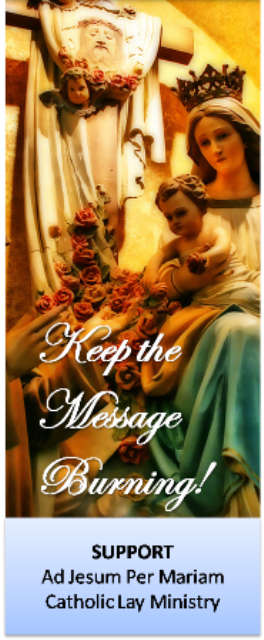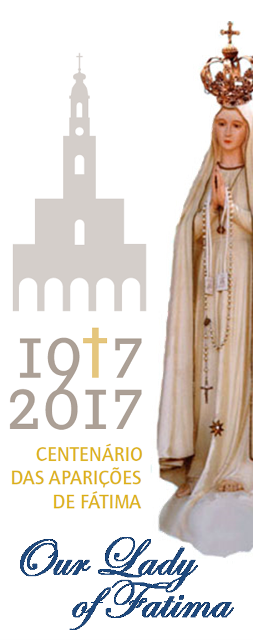Litany: It's History
...Litanies appeared in honour of God the Father, of God the Son, of God the Holy Ghost, of the Precious Blood, of the Blessed Virgin, of the Immaculate Conception, of each of the saints honoured in different countries, for the souls in Purgatory, etc. In 1601 Baronius wrote that about eighty forms were in circulation. To prevent abuse, Pope Clement VIII, by decree of the Inquisition of 6 Sept., 1601, forbade the publication of any litany, except that of the saints as found in the liturgical books and that of Loreto. To-day the litanies approved for public recitation are: of All Saints, of Loreto, of the Holy Name, of the Sacred Heart, of St. Joseph [Ed. and, approved in 1960, of the Most Precious Blood of Our Lord Jesus Christ]. Many, many other litanies exist, and all of them may be prayed privately, but only these six are approved for public prayer...
Sources:
http://www.newadvent.org/
http://www.fisheaters.com/ |
LitaniesTaken from Fisheaters.Org
A litany is a well-known and much appreciated form of responsive petition, used in public liturgical services, and in private devotions, for common necessities of the Church, or in calamities — to implore God's aid or to appease His just wrath. This form of prayer finds its model in Psalm cxxxv: 'Praise the Lord, for he is good: for his mercy endureth for ever. Praise ye the God of gods . . . the Lord of lords . . . Who alone doth great wonders . . . Who made the heavens', etc., with the concluding words in each verse, "for his mercy endureth for ever."... The Roman Missal has retained the prayers for all classes of people in the Mass of the Presanctified on Good Friday, a full litany on Holy Saturday, and the triple repetition of "Kyrie Eleison", "Christe Eleison", "Kyrie Eleison", in every Mass. The frequent repetition of the "Kyrie" was probably the original form of the Litany, and was in use in Asia and in Rome at a very early date. The Council of Vaison in 529 passed the decree: "Let that beautiful custom of all the provinces of the East and of Italy be kept up, viz., that of singing with great effect and compunction the "Kyrie Eleison" at Mass, Matins, and Vespers, because so sweet and pleasing a chant, even though continued day and night without interruption, could never produce disgust or weariness". The number of repetitions depended upon the celebrant. This litany is prescribed in the Roman Breviary at the "Preces Feriales" and in the Monastic Breviary for every "Hora" (Rule of St. Benedict, ix, 17). The continuous repetition of the "Kyrie" is used today at the consecration of a church, while the relics to be placed in the altar are carried in procession around the church. Because the "Kyrie" and other petitions were said once or oftener, litanies were called planœ, ternœ, quinœ, septenœ. The Litany of the Saints The Litany of the Saints -- the oldest of the litanies, dating to A.D. 595 -- is prayed liturgically at the Easter Vigil, during ordinations, on Rogation days, and also during solemn exorcisms, etc.. Privately, it is prayed any time one wishes, as with the other litanies, but is especially prayed after sundown on All Saints' Day in preparation for All Souls' Day, and on All Souls' Day itself. This litany first invokes God in all Three Persons, then follow, in this order: Mary; the blessed spirits; St. Joseph and the Patriarchs and Prophets; the Apostles and Evangelists; all the disciples of the Lord; the Holy Innocents and the glorious martyrs; the holy Bishops and Confessors (those who suffer for the faith); the holy priests and Levites; the virgins and widows; and all holy men and women. The Litany of Loreto The most beautiful, Marian Litany of Loreto (the "Litany of the Blessed Virgin Mary"), whose present form dates to the 15th c., is prayed (usually privately) on Marian feasts and their vigils, on Saturdays, and is often added to Rosaries. It takes its name from Loreto, a small town on the Eastern coast of central Italy, in the region of Le Marche, a place where one can find what is known as the Holy House of Loreto. This house, according to tradition, is the house where Mary was born and in which the Archangel Gabriel made his Annunciation to her. It is said to have been translated by angels from Nazareth to Dalmatia in present-day Yugoslavia after Saracens re-took the Holy Land, and then to Loreto in A.D. 1291. St. Gabriel's "flight" from Heaven during the Annunciation, has caused Our Lady of Loreto to be seen as the Patroness of aviators and of air travellers -- and Charles Lindbergh, the astronauts of Apollo 9, and Umberto Nobile, who flew over the North Pole in the 1920s, all took images of Our Lady of Loreto with them on their historic missions. The shrine (a basilica is now built around the house) has been associated with miracles, its veneration is papally approved, and around 50 Popes themselves have made pilgrimages to it or otherwise honored it in word, as have many, many Saints. The image at right is a version of the very unique and stylized statue of Our Lady of Loreto which is kept at the shrine. The statue -- the original was destroyed by fire -- depicts Our Lady holding Jesus and as clad in a dalmatic. Its deep hues are due to the original wood's having been darkened by the soot from candles and lamps that burned around it in the shrine's sanctuary. The Other Public Litanies The Litany of the Holy Name of Jesus was probably written by SS. Bernardine of Siena and John Capistran early in the 15th c. and is prayed most especially during the month of January, which is dedicated to the Holy Name. The Litany of the Sacred Heart is a "natural" for the month of June, dedicated to Christ's Heart. The Litany of the Precious Blood is commonly recited in the month devoted to the Blood, July. March, being dedicated to St. Joseph, is a common time to pray the Litany to St. Joseph. |
 Litanies with Indulgences
The faithful who pray any of these Litanies, under the usual conditions, receive a partial indulgence. Below are links to these litanies in English and Latin. When prayed, one person (or half the people) chants or reads the invocation while the others chant or read the responses which are in italics in the pages below.
Jump to: (Links from Fish Eaters.org)
|









